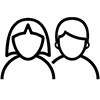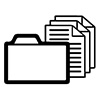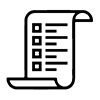Thank you for your interest in the NERCOMP 2018 Annual Conference! Please take some time to read the NERCOMP Annual Conference Call for Proposals, which explains the information you will be asked to provide when filling out this form.
After reading the call for proposals document, if you still have questions about submitting a proposal, please contact Sarah Reynolds, EDUCAUSE speaker liaison.
Before Writing Your Proposal
Please complete the following steps before you fill out the form and submit your proposal:
- It is important to create or update your EDUCAUSE profile. Your profile information will help reviewers understand your qualifications.
- It is not uncommon for a proposal to promise to present significant results without describing those results. In the session description, be sure to convey your results and key presentation points so that reviewers can better evaluate your work.
For more advice on developing a successful proposal, visit the EDUCAUSE Presenter Concierge Steps to Writing a Successful Conference Proposal.
Including the Student Voice
NERCOMP also invites sessions that engage the undergraduate learner perspective as presenters or contributors to session activities. To support this emphasis, NERCOMP will provide complimentary registration for up to two full-time undergraduate student presenters per session at the face-to-face conference.
Program Tracks and Key Topics
The program committee has outlined a series of tracks and key topics they believe will make an interesting and useful program. The program sessions will focus on these key topic areas:
- Data-Driven Decision Making
- IT Services: Support Models and Practice
- Leadership and Organizational Development
- Libraries and Scholarship in the 21st Century
- Policy, Regulations, and Security
- Systems and Solutions
- Teaching and Learning
- Transforming the Student Experience
Session Formats
Standard Presentations (45 minutes)
These sessions are 45 minutes long; presenters and panels are asked to allocate at least 10 to 15 minutes for Q&A with the audience. Standard presentations are opportunities to present in detail on a project. Proposals will be evaluated against the selection criteria listed below.
Interactive Presentations (45 minutes)
These sessions are opportunities to share topics of interest through an innovative, thought-provoking format that encourages audience participation and interaction. Participant feedback and response to issues will be encouraged throughout the session.
Panel Discussions (45 minutes)
These sessions feature two to four dynamic presenters offering case studies about how their institutions have approached a shared topic, or they may feature presenters taking different and sometimes controversial perspectives on a topic. Examples may include the evolving role of the CIO, security, privacy and cloud, advancing IT innovation within budgetary constraints, or other critical issues in higher education. Participant feedback and response will be encouraged for all panels.
Poster Sessions (60 minutes)
A poster session demonstrates the use of an emerging technology or innovative practice for teaching and learning, typically in the early stages of development. Presenters may use a laptop, a poster, or both to demonstrate the unique features and functionality of the tool or program and to assist in providing a visual overview of the project. As attendees visit, presenters have the opportunity to discuss the poster topic with them. Therefore, presenters should prepare a few introductory remarks (one to two minutes) to engage listeners in the subject.
The standard setup for a poster includes the following
- 6' skirted table or a high cabaret skirted table
- Wireless Internet access
- 40" x 30" foam boards
Session Delivery
Face-to-face conference program
This session will be presented in Providence.
Selection Process
Proposals will be reviewed by the NERCOMP Annual Conference 2017 Program Committee and Session Proposal Reviewers using the following criteria:
- Quality of Topic: Is the topic of importance, relevance, value, and/or interest to the targeted area of information resources in higher education?
- Proposed Topic Coverage: Does the proposal cover the topic adequately?
- Speaker Knowledge: Does the speaker appear to have sufficient knowledge, expertise, and authority to address this topic?
- Speaker Presentation Style: Has the speaker provided sufficient evidence of his or her ability to effectively present on the topic?
- Event-Specific Criteria: Has the speaker included strategies that will effectively engage the attendees and result in effective learning?
- Overall Rating: What is your evaluation of this proposal overall?
Proposals will be selected to ensure the conference program offers a comprehensive, noncommercial, objective, and diverse treatment of issues related to the theme and key topics.
Applicants will be notified of proposal status in mid-November. Note that you may be invited to present in formats other than the one you selected or those noted in the proposal submission form. Presentations will take place Tuesday, March 27 and Wednesday, March 28 at the NERCOMP Annual Conference 2018 in Providence, Rhode Island. Poster sessions will take place in the afternoon on Wednesday, March 28.
Speaker Expectations
IMPORTANT: Presenters are responsible for registering in advance for the conference, paying the full conference registration fee, and securing and paying for travel and lodging. Presenters are also asked to upload related resources (documents or links) prior to the presentation and to upload presentation materials and additional related resources after the presentation to their session's entry in the online program. These resources provide support for the presentation and then become a part of the conference proceedings so that your valuable information is accessible beyond your session.
Steps for Submitting Your Proposal
All NERCOMP sessions will be conducted face-to-face in the meeting venue. Have questions about the CFP online form and what information is required? Please take a look at this call for proposals online submission overview below.

Step 1: Proposal Presenters
Add presenter information to the submission.

Step 2: Abstract and Session Details
Enter your session abstract and description, description of engagement strategies, session type selection, session track selection, and session title.

Step 3: Session Learning Objectives
Provide three learning objectives that are clear, measurable, and achievable.
Track Descriptions
Data-Driven Decision Making
Explore the intersection of administrative and academic questions by applying data, information, and analysis, with the goal of providing enhanced knowledge and predictive intelligence to facilitate informed decision making at all organizational levels and in all areas.
This includes developing effective methods for business intelligence, reporting, predictive modeling, dashboards and analytics to ensure they are relevant to institutional priorities and decision making and can be easily accessed and used by administrators, faculty, and students.
Examples include:
- Leveraging predictive modeling and analytics to assist with enrollment or retention
- Creating dashboards that matter
- Breaking down the silos of data
- How to become a data-driven institution
- Business intelligence/data management
- Learning analytics
- Using data to optimize student learning in digital environments
IT Services: Support Models and Practice
With the proliferation of technology choices comes a corresponding need for flexible technology support services, service delivery processes, and models that meet the challenges of constant change in academic and administrative computing. Whether your institution is evaluating and implementing new technologies or applying the latest updates to current technologies, this track invites you to share your strategies for providing effective and efficient technology support services and solutions to an ever-changing user demographic. Proposals may feature tools and techniques for supporting the use of information systems for teaching, learning, and research; or for campus-wide systems and technologies. They may emphasize communication plans, project management, change management, or evaluation processes.
Sample topics include:
- Help desk support applications (IM, ticketing, etc.)
- Central vs. distributed support models
- Best practices (ITIL v3, Pink Elephant, etc.)
- Classroom technologies and design (computers, multimedia, etc.)
- Students: consultant programs and technology support (ResNet)
- Training and documentation development
- Information and computer literacy programs
- Workstation standards, management, and peripheral support (multiuse printers, handheld devices, etc.)
- Media services (asset management, AV equipment, etc.)
- Managing software licenses and software access
- Hardware access and distribution programs
- Support for distribution of streaming, podcasting, distance learning, etc.
- Green technologies (power management, recycling, etc.)
- Supporting the proliferation of consumer technologies in use by students
Leadership and Organizational Development
Leaders at every level rise to meet a spectrum of challenges, including expanding client expectations, resource constraints, increasing calls for accountability, and proliferating technology alternatives. Effective leadership, both at the top and from within, enables the organization to build a shared sense of mission and allows all members to contribute their good ideas and help shape shared practices that serve that mission. Proposals are requested on innovative and practical responses to these shared challenges, particularly relating to leading from within the organization.
Sample topics include:
- Developing and advocating for a shared vision
- Creating and sustaining high performance teams
- Career and professional development
- Peer mentoring and coaching
- Recruiting and retaining staff
- Divergent paths to leadership, and leadership at every area and every level
- Promoting gender balance and diversity in your organization
- Strategic planning and strategic planning tools (e.g. balanced scorecard)
- Innovative budgeting and funding models
- Aligning governance models and processes with institutional mission
- Succession planning
- Communication best practices
- Cross-organizational/cross-institutional professional networks
- Unconventional leadership
- Creative project management
- Building a culture of innovation
Libraries and Scholarship in the 21st Century
Libraries are redefining themselves. From content creation and research initiatives to new partnerships around teaching and learning, how will libraries lead the information age? What collaborative partnerships and decisions do we need to take full advantage of new technologies in scholarship? Instead of just doing what we have always done, what are the strategic innovations that you’d like to share with the community? Given the economic situation, how can we re-envision new organizational structures and services?
Possible session topics include but are not limited to:
- Issues surrounding 21st century scholarly communication: copyright, open access
- Supporting faculty in digital scholarship and research
- Innovations in information fluency programming/instruction
- Faculty engagement in information literacy and instruction
- Assessment, especially demonstrating the library's contribution to learning outcomes
- Getting to know our users: ethnographic research, usability studies
- Innovations in delivery of content: e-books, ILL, patron-initiated purchasing
- Open source in libraries
- New discovery tools and services
- Mobile research
- New organizational structures and services
- When cultures collide: changing perceptions of libraries' roles and missions
- Reconceiving library spaces: new purposes, new partners
- Greening the library
- Cooperative digitization projects
- Cloud-based services
- Innovative outreach strategies
- Campus collaborations
Policy, Regulations, and Security
Protecting critical data and services in a culture that puts a high value on openness and accessibility presents special challenges. With increasing numbers moving to "the cloud" and more and more data available on mobile devices, how do institutions protect data that is outside the control of central IT organizations? How do our campuses balance the appeal and value of social networking sites such as Facebook, Twitter, and blogs against existing legal frameworks? With increasing legislative attention to personal privacy and data protection, how do colleges and universities respond, despite limited resources and without compromising other priorities? How has the "consumerization" of IT impacted operational policy in other parts of the institution? Issues such as these have placed a higher priority on the development of information security policies and tools, as well as a greater emphasis on security awareness and training at all levels of the institution.
Sample topics include:
- The evolving role of the information security officer
- Policy development and governance models
- Identity and access management policies
- Federated identity/authentication
- Policies that address emerging technologies
- Policies on cloud services and social media
- Strategies to manage the impact of social media on institutional brand/identity
- E-commerce challenges such as PCI compliance, mobile merchant accounts
- Information security awareness, education and communication
- Secure guest and/or remote access
- Security audits, penetration testing
- Data classification schemas
- End-point security/remediation strategies
- Data encryption tools
- Data and network security risk assessment
- Incident response/computer forensics
- Intrusion detection and prevention
- Data security compliance monitoring
- Network liability insurance models
Systems and Solutions
No matter the size or scale of your enterprise, the expectations of your users are always high. Your systems must be stable and agile, secure yet accessible, and easy to use despite their complexity. Your operations must be grounded by proven technologies and best practices, while responding to calls for cutting-edge innovation. In spite of these challenges, you must remain cost-effective in order to be considered successful. How do we achieve this? By sharing our collective experiences and learning from each other. We are looking for your stories of creative or nontraditional solutions to age-old and new problems in the enterprise.
Sample topics include:
- Green IT
- Virtualization
- Cloud computing
- Software as a service
- Identity/access management
- Document and records management
- Building a PM culture that extends into the business and technical domains
- Disaster recovery/business continuity/backup strategies
- Administrative/ERP systems and integration
- Systems integration
- SDLCs and software release management
Teaching and Learning
This track serves as a venue for highlighting transformative work, innovative uses of technologies, and creative initiatives that extend or reframe technology used in teaching and learning.
The range of questions includes:
- How are digital technologies transforming the enterprise of teaching, learning, and assessment in higher education, both in the classroom and beyond?
- How is the use of technology transforming faculty and student interactions?
- In what ways can the digital landscape support diverse learning styles as well as engage increasingly mobile and continually networked students?
- How can we know if our use of technology improves the learning experience for our students? How can we assess our use of technology?
- What opportunities are on the horizon, and what developments should we be paying attention to?
- How do we put theory into practice?
Sample topics include:
- Strategies for faculty development and support, along with best practices for supporting change, innovation, and emerging technologies
- Approaches to providing applications and resources for mobile learners
- Determining the effectiveness of learning space design
- The evolution of the learning management system
- Assessment strategies for learning, course improvement, accreditation, technology adoption decision-making, etc.
- Models for project planning, development, and instructional design
- Use of assistive technologies and principles of universal design
Transforming the Student Experience
Explore students' evolving digital experience. How will technology change the way campuses recruit and retain students and communicate with alumni? How will digital technologies affect administrative and academic day-to-day tasks? In addition to facilitating students' interactions with the school, faculty, and each other, digital advances can potentially increase student engagement and academic success.
Has your institutional created a unique approach to improve outcomes or service through the use of technology? If so, we want to hear about them.
Sample topics include:
- Using mobile technology to make service easier
- Creating one-stop shopping
- Using software or business processes to improve recruitment or retention
- Improving student community experience
- Using innovative ways to engage with students (or to keep students engaged with the campus community)
- Leveraging cloud-based solutions as a cost-effective means to enhance the student experience
